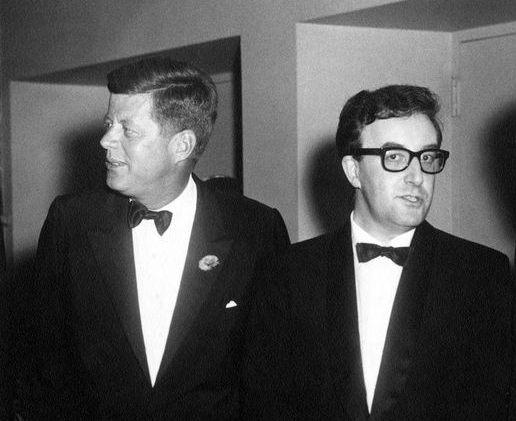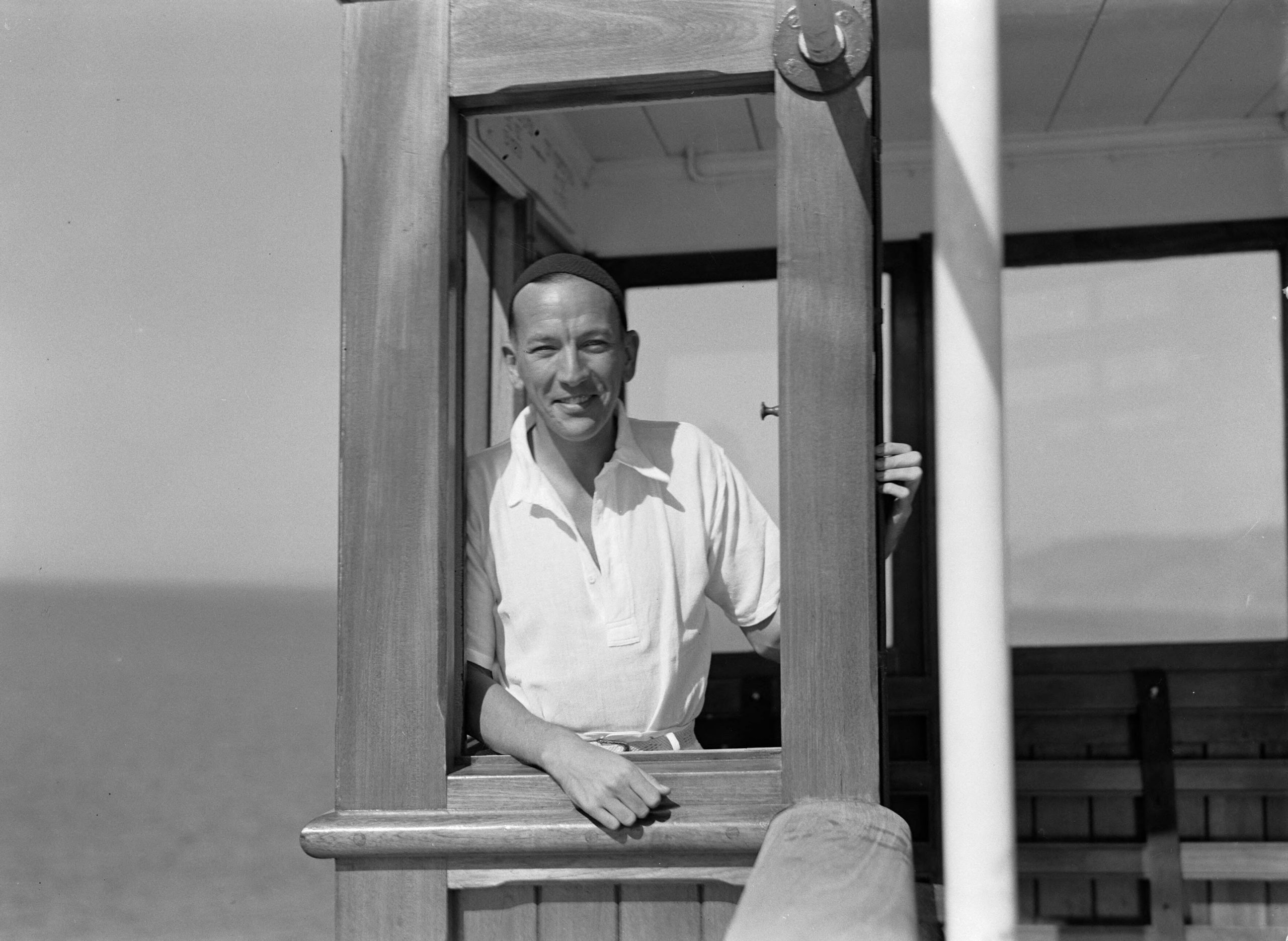Continued from part one
Although James Mason enjoyed some success in British cinemas in the mid-forties, he was anything but fond of the British film world: in 1945, in the column of a film magazine, after describing conditions in British film studios, Mason put it like this: “Indeed it would be a glum outlook for me if there were not still a Hollywood.”.
Admittedly, James Mason did not know at this point that Hollywood would be his future place of work: nevertheless, this statement is now regarded as a kind of one-way ticket to America for James Mason.
Regardless of whether he worked in Britain or California, working in the movies at the time presented challenges for any actor. Mason’s article, which strongly criticized the British film industry, was not received well by British filmmakers.
First Mason professed pacifism, now he criticized the British film industry as well – no question that Mason was not the first choice for many producers and directors.
Nevertheless, his further career path was predetermined with the publication of this article.
James Mason was now at the forefront of British actors.
Odd Man Out In Great Britain – Welcome To Hollywood
It was nothing unusual for British filmmakers to move to Hollywood: British director Alfred Hitchcock had already gone to Hollywood in 1940. Director David Lean was one of the few British filmmakers who remained loyal to the British film world throughout his career.
In 1947, James Mason starred in Odd Man Out: this work is now considered by film connoisseurs to be one of the best films starring James Mason.
Stewart Granger, a much more popular actor at the time, had turned down the lead role in Odd Man Out.
In the film, Mason plays an IRA fighter who is chased across nocturnal Belfast after a failed bank robbery.
The film Odd Man Out was a huge success with critics and audiences at the time, with James Mason now at the forefront of British actors. Just now Mason made the decision to move to the United States. Hollywood exerted a great attraction on the actor, he was even ready to leave behind his now successful career in British cinema.
First Hollywood Work
At the end of the forties, the time had come: James Mason accepted to start all over again after his mixed time in British film. In Hollywood, James Mason was presented with a rather nasty welcome present: he had hardly set foot on American soil when he was sued by a producer for breach of contract.
James Mason’s declared goal was to never accept any studio contract with an artistic content that he did not feel absolutely committed to. This view is the credo of most successful actors today – but that was not the case back then. With this view, Mason was considered a “problem case” and was labeled a rebel who despised the studio system. In the late forties, the Hollywood studio system was at the height of its power. If one wanted to make a successful film, there was no way around the big studios. At the end of the forties, James Mason starred in two of the four Max Ophüls-directed films in Hollywood. In 1949 and 1951, James Mason starred twice alongside Ava Gardner – especially the drama Pandora and the Flying Dutchman (1951) enjoyed great popularity afterwards and has collector value today. At the time, however, the drama received a very lukewarm reception: As with many James Mason films, it wasn’t until many years later that it crystallized that the films had the potential to become film classics.
Buster Keaton – Mason writes film history in a different way
Naturally, the Mason couple – consisting of James Mason and Pamela Mason – started thinking about where they wanted to live in California: An Italian-style villa in Los Angeles caught the interest of Mason’s wife Pamela and became the Masons’ new home. The villa was the former residence of silent film legend Buster Keaton. Keaton had since been written off as a star – the studios had even destroyed the copies of the Buster Keaton films in order to recycle the silver they contained. One day, James Mason himself is said to have torn down a wall in the mansion’s screening room, and in the process he made a sensational discovery: behind the wall were immaculate copies of numerous Buston Keaton films.
Mason, who had always been fascinated by the Keaton films, could not believe his eyes at first.
Today, one thing is certain: had Mason not discovered these copies back then and participated in their restoration, today probably no one would remember who Buster Keaton was in the first place.
A black-and-white film needed actors like James Mason who could capture the audience with their facial expressions and their voice.
Julius Caesar – a plea for black and white films
In 1953, director Joe Mankiewicz brought James Mason on board for the film project Julius Caesar (1953): The leading role of Marcus Antonius was played by Marlon Brando, Mason slipped into the role of Brutus, whose character is very decisive for the course of history. At the time, Mankiewicz made sure in the contract that he would be allowed to shoot the film in black and white – making the historical drama an exotic among its contemporary films, all of which have been shot in color ever since color movies had been invented. Mankiewicz justified his decision as follows: “(…) Because I knew that if we shot in color the assassination scene [in which Julius Caesar is killed] would just be a big bloody mess on the screen, and the audience would be looking at the blood instead of Brutus’ [James Mason’s] face, and that was the heart of the film. There was always a romantic sadness about James which was just perfect.“ This quote is more than the confession of a lover of black-and-white films: it explains why color films are not necessarily superior to black-and-white films. A black-and-white film needed actors like James Mason who could capture the audience with their facial expressions and their voice. There was no need to see the blood on the screen, one could imagine that. What one could not imagine was the unique facial expressions of an actor of the caliber of James Mason.
At that time there was probably no actor better suited for the role of Brutus: with this role Mason celebrated his breakthrough as a Hollywood actor.
Hollywood highlights
In the following two decades, James Mason was offered the opportunity to immortalize his acting skills in countless Hollywood films: for example, he played one of the leading roles in Judy Garland‘s comeback film A Star is Born (1954). In 1959, Alfred Hitchcock discovered James Mason’s acting potential: In North by Northwest (1959), he played the role of the villain.
In 20,000 Leagues Under the Sea (1954), James Mason starred alongside Kirk Douglas as Captain Nemo: it was not to be the last time Mason starred in a Disney adaptation of a Jules Verne novel. In Journey to the Center of the Earth (1959), Mason played the lead role of Oliver Lindenbrook.
In 1964 and 1968, James Mason starred in the films Genghis Khan (1964) and Mayerling (1968) alongside Omar Sharif.
“My range was limited, my speech colorless, my delivery casual. I had become a lazy cinema actor.”
James Mason – the classical film actor
Until the end of his career, Mason never gave up on the dream of one day becoming a sought-after classical actor: in 1953, Mason’s former director Tyrone Guthrie of London’s Old Vic Theatre pitched his tents in Toronto to host a festival of classical theater. Among the performers were legends such as Alec Guinness. Mason set off for Canada in a salmon-pink Ford – much to the annoyance of his wife, who couldn’t understand why he was leaving his successful Hollywood career on short notice. But Mason had other problems: “My range was limited, my speech colorless, my delivery casual. I had become a lazy cinema actor”, Mason said looking back on his time in Canada. At the time, there was a vast difference between being a film actor and a theater actor interpreting classical works such as those by Shakespeare.
Despite good reviews and the esteem of his peers, Mason was to appear on a theater stage only three more times in his entire life after that 1953 festival.
Mason always sought access to the world of classical actors – but he didn’t fit into that type of role entirely. Instead, he founded a new role subject, the subject of the classical film actor, who can slip into contemporary roles in particular.
In his later career, Mason committed himself solely to cinema, for which he created unforgettable moments. Among all the famous actors in the world, there are careers that look similar to each other: But the career of a James Mason certainly did not and does not exist a second time in this form.
Main source: Morley, Sheridan: Odd Man Out: James Mason – A Biography, 2016 Dean Street Press
Cover picture: © Simon von Ludwig

 Deutsch
Deutsch





